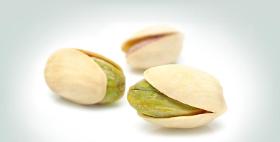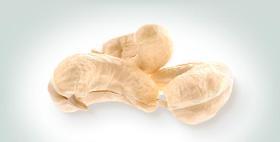- europages
- >
- COMPANIES - SUPPLIERS - SERVICE PROVIDERS
- >
- fruit%20trees
Results for
Fruit%20trees - Import export

HORST WALBERG TROCKENFRUCHT IMPORT GMBH
Germany
Productinformation Harvesting of pistachio happens in the middle of september. Pistachio trees look very alike to almond trees, their female trees carry fruit after they have been fertilized through their male counterparts. The very first harvest of pistachio is then possible after seven years, and afterwards in a two-year-cycle. Around april pistachio trees are beginning to bloom. When the plant begins ripening, its pit is growing so fast, it will downright burst open its surrounding shell. Pistachio will be roasted in their shell and are traded salted. These tasty green pits are not only consumed as a snack, they can also be found in special types of sausages or on top of chocolate candy – as they are always a delicious addition. Origin Pistachio are cultivated over extended areas in Iran to Turkey and from Pakistan to India. The United States by now also have an enormous industry branch of producing pistachio.
Request for a quote
HORST WALBERG TROCKENFRUCHT IMPORT GMBH
Germany
Productinformation Cashew nuts are harvested in India around the time of may and june. The “Kashu” tree derives from the same family of trees as mango- and pistachio-trees. They carry their first fruits approximately after three years - the tree’s maximum carrying capacity is reached after seven years. The cashew tree’s fruit consists of two parts: the cashew “apple” and the actual cashew “nut”, which grows right under the apple part. Cashew nuts are eaten raw in asian regions, but in the rest of the world there are known as a deliciously roasted nut-snack. The cashew apple itself also has a tasty purpose: in the indian market, juices and wine made out of the fruit are very common and popular. Origin India is the major exporting country – especially the national regions of Kerala, Karnataka, Tamil Nadu, Andrdhra Pradesh, Orissa, Maharashtra and Goa. Other countries of origins are Brazil, Mozambique, Kenya, Tansania, Vietnam and Sri Lanka – from America and Africa just over to Asia.
Request for a quote
HORST WALBERG TROCKENFRUCHT IMPORT GMBH
Germany
Productinformation Coconuts have been a popular food- and raw material source for thousands of years. On account of their delicious taste and positive traits, coconuts are becoming increasingly popular even in our part of the world. Besides valuable protein, the coconut also provides brain sustenance in the form of fructose as well as palmitic- and oleic acid. The unique characteristics of lauric acid, the main fatty acid in coconuts, have been known for many years. Today, lauric acid is used to counteract viruses, bacteria and fungus, which makes coconut chips a real fitness snack. Origin The coconut palm tree originated in Melanesia, a group of islands in the pacific, north-east of Australia. It spread in part naturally and also through humans. Coconuts can drift a long way in the ocean and remain capable of germinating even after swimming in salty water for 100 days. Polynesian seafarers are responsible for its spread to South-East Asia. The coconut palm tree thrives in the wet and warm tropical belt. Its main growing areas include the Philippines, Indonesia, Sri Lanka, South India, Africa and the coasts and rivers of South America. The tree bears fruit the entire year around and produces - depending on age and location - 30 to 150 ripe coconuts per year. Palm climbers and trained monkeys harvest the coconuts. The coconut is of great value to local people.
Request for a quoteDo you sell or make similar products?
Sign up to europages and have your products listed
Results for
Fruit%20trees - Import exportNumber of results
3 ProductsCountries
Company type
Category